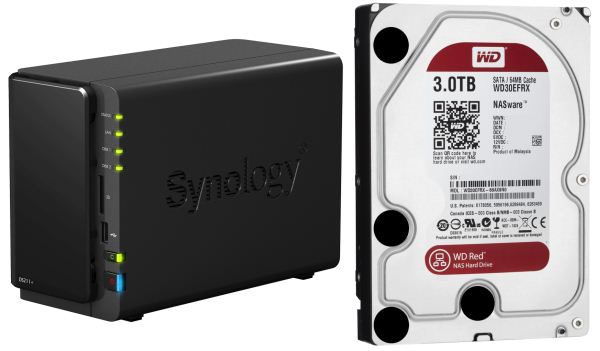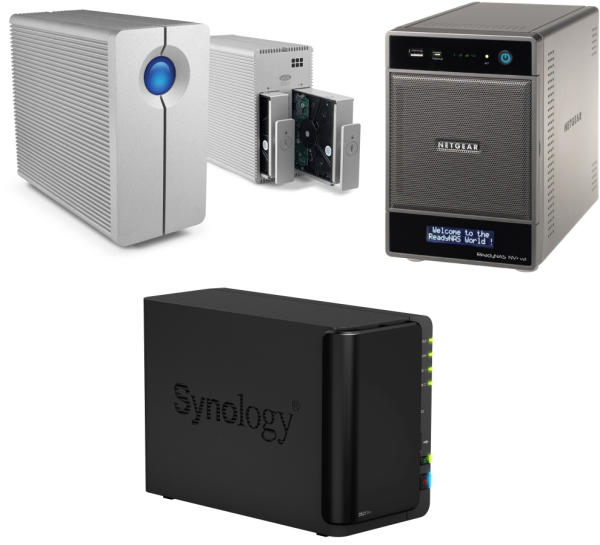Western Digital Red Review: Are NAS-optimized HDDs Worth the Premium?
by Ganesh T S on August 17, 2012 4:20 PM EST- Posted in
- Storage
- NAS
- Western Digital
Introduction and Testbed Setup
Western Digital (WD) introduced hard drives specifically targeted towards NAS systems under the Red branding last month. Jason had some initial coverage at launch time. WD claimed to have put in a number of firmware features and some additional hardware aspects in the Red lineup to make it suitable for NAS usage.
WD touted the following main points
- Less aggressive head parking (no IntelliPark feature)
- Configurable Time Limited Error Recovery (TLER), with a default of 7 seconds
- IntelliPower disk rotation speeds (comparable to Green drives)
- Vibration reduction mechanism in hardware
- 3-Yr. warranty and 24x7 phone support
In the next section, we will analyze each of these claims in detail. First, let us take a look at the testbeds. We used the WD Red drives standalone in a PC and also as part of a few SMB / SOHO NAS systems. Our standalone PC testbed was also used for some of the NAS testing. Our Summer 2012 NAS testbed's specifications are provided below:
| NAS Benchmarking Testbed Setup [ Summer 2012 ] | |
| Processor | Intel i7-3770K CPU - 4C/8T - 3.50GHz, 8MB Cache |
| Motherboard | Asus P8H77-M Pro |
| OS Hard Drive | Seagate Barracuda XT 2 TB |
| Secondary Drives | Western Digital Red WD30EFRX 3 TB |
| Corsair Performance 3 Series™ P3-128 128 GB SSD (Offline in Host OS) | |
| Memory | G.SKILL ECO Series 4GB (2 x 2GB) SDRAM DDR3 1333 (PC3 10666) F3-10666CL7D-4GBECO CAS 7-7-7-21 |
| PCI-E Slot | Quad-Port GbE Intel ESA-I340 |
| Case | Antec VERIS Fusion Remote Max |
| Power Supply | Antec TruePower New TP-550 550W |
| Host Operating System | Windows Server 2008 R2 Enterprise |
| . | |
A Windows 7 virtual machine was set up using Hyper-V with the following configuration
| Windows 7 Ultimate x64 : Guest OS | |
| Processor | Single Physical Core of Intel i7-3770K |
| OS Hard Drive | VHD File on Seagate Barracuda XT 2 TB |
| Secondary Hard Drive | Corsair Performance 3 Series™ P3-128 GB SSD |
| Memory | 1 GB |
The following NAS units were used for testing the WD Red drives in RAID-1 configuration.
- LaCie 2big NAS
- Netgear NV+ v2
- Synology DS211+
The drives were benchmarked against 2 x 3TB Seagate Barracuda 7200rpm drives that were bundled with the LaCie 2big NAS.
An important aspect of NAS systems that we haven't covered in detail is the effect of prolonged usage and how differently the NAS performs when it is close to full capacity. Towards this, we also used our build-in-progress NAS testbed to stress the WD Red drives in the Synology D211+. The details of this separate testbed and methodology are described in a later section.












87 Comments
View All Comments
MrSpadge - Saturday, August 18, 2012 - link
Simple: use the right tool for the job.kmmatney - Thursday, August 23, 2012 - link
I work for a small company and we use consumer-class hardware fairly often for non-essential tasks. You have to, when working on a project with a limited budget.hsew - Friday, August 17, 2012 - link
I remember reading somewhere that Intellipower was unsuitable for RAID due to the fact that it is not a set spindle speed, rather a sweet spot speed determined in manufacturing. If it is in fact true that Intellipower is unsuitable for RAID, that would make these far less appealing as NAS drives. If I wanted to have a NAS I would want at least two drives in RAID 1. Why is WD shying away from 5400 RPM? It HAS a place, low power data storage!jwilliams4200 - Friday, August 17, 2012 - link
Why don't you read the article before you comment?hsew - Friday, August 17, 2012 - link
Because Ctrl+f didn't lead to any specific discussion on aforementioned issue...ganeshts - Friday, August 17, 2012 - link
Well, that is marketing for you :) 'People don't like lower numbers, so let us just give it a name' must have been what the WD Marketing team must have thought.FWIW, all concrete proofs of the spindle speed that I have seen online point to 5400 rpm for IntelliPower drives.
Wwhat - Sunday, August 19, 2012 - link
I think you are wrong actually, WD has drives that they use the number 5400 for, it's no real issue these days because with high density 5400 is fast enough.And I think they actually have changeable speed drives that probably max at 5400 but also ones that max at 7200 because they have a 'green' type and non-green types with the variable speed technology, so I'm prretty sure it's not some euphemism. And I also think people are more positive to numbers when it comes to HD's rather than the unspecified 'variable', it's more a risky move for WD I would say.
EnzoFX - Friday, August 17, 2012 - link
Is it me or was there no prices listed? or maybe a comparison for someone debating between reds and greens =P.ganeshts - Friday, August 17, 2012 - link
Prices are all over the park. IIRC, the 3TB version launched at $189 [ http://www.anandtech.com/show/6083/wd-introduces-r... ], but it is at $240 on Newegg right now.. I guess I left it to the reader to do the price comparison at the time of purchase :) But, thanks for mentioning.. it really was an oversight :)adrianblack - Friday, August 17, 2012 - link
I must point out the WD AV-GP line which has been out for a while were designed for 24/7 continuous and high-temp operation. I have two of these drives in my server now..... (The older 1.5TB drive has been in there for 2.5 years)WD says:
"24x7 reliability: These drives are designed to last in high temperature always-on streaming digital audio/video environments such as PVR/DVR, IPTV, and video surveillance systems."
The downside of the AV-GP line was they didn't have the idle-parking disabled, so you did have to use WDIDLE first to fix that problem. (I accumulated 245k cycles on my older 1.5TB drive before I disabled auto-park.) They have 1 million hour MTBF, some kind of optimization for better video streaming and PWL which they call preemptive wear leveling.
So pretty similar to the RED which add the vibration mitigation and a default disable on the IDLE-Park. (WD states 1 million hour MTBF on the RED drives, by the way.)